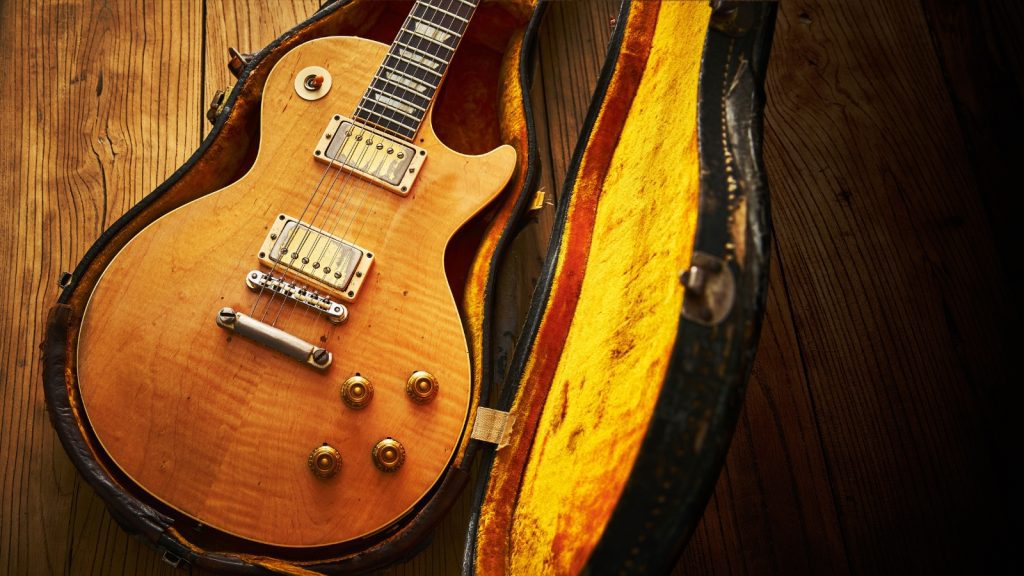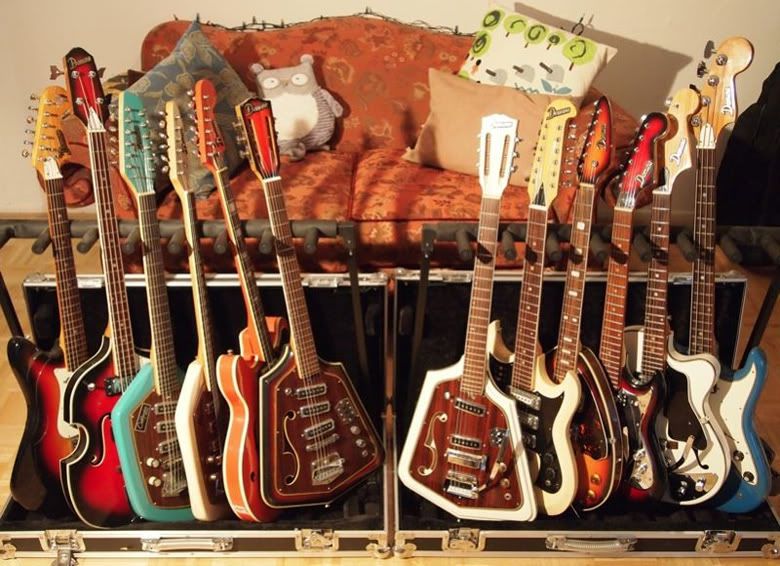The guitar is one of the most popular and widely recognized musical instruments in the world. Its history can be traced back thousands of years, with its origins in ancient civilizations such as Mesopotamia and Egypt. Over time, the guitar has evolved and undergone various transformations, leading to the creation of different types and styles. One such type is the Domino Guitar, which offers a unique design and sound compared to traditional guitars.
The Domino Guitar is a relatively new addition to the world of guitars. It was created by a team of innovative designers and musicians who wanted to offer something different to guitar players. The Domino Guitar features a distinct shape and design that sets it apart from traditional guitars. It is made using modern materials and manufacturing techniques, resulting in a lightweight and easy-to-play instrument.
Differences between the Domino Guitar and Traditional Guitars
One of the main differences between the Domino Guitar and traditional guitars lies in the materials used. Traditional guitars are typically made from wood, such as spruce or mahogany, which gives them a warm and rich tone. On the other hand, the Domino Guitar is made from composite materials, such as carbon fiber or fiberglass, which gives it a unique sound and durability.
Another difference is in the shape and size of the instruments. Traditional guitars usually have a classic hourglass shape with a hollow body, while the Domino Guitar has a more modern and angular design with a solid body. The size of the Domino Guitar is also smaller compared to traditional guitars, making it more comfortable to hold and play.
The number of strings is another distinguishing factor between the two types of guitars. Traditional guitars typically have six strings, while the Domino Guitar can have anywhere from four to eight strings. This allows for a wider range of notes and chords to be played on the Domino Guitar.
Lastly, there is a difference in tuning between the two types of guitars. Traditional guitars are usually tuned to standard tuning, which is EADGBE from low to high. The Domino Guitar, on the other hand, can be tuned to various tunings depending on the player’s preference and style of music.
Pros and Cons of the Domino Guitar

The Domino Guitar offers several advantages over traditional guitars. One of the main pros is its lightweight nature. The use of composite materials makes the Domino Guitar significantly lighter than traditional guitars, making it easier to carry and play for extended periods of time.
Another advantage is the ease of playability. The smaller size and ergonomic design of the Domino Guitar make it more comfortable to hold and play, especially for beginners or those with smaller hands. The fretboard is also designed to be more accessible, allowing for easier finger placement and chord changes.
The unique design of the Domino Guitar is also a pro for many players. Its modern and angular shape sets it apart from traditional guitars, making it a visually appealing instrument. The use of composite materials also allows for more flexibility in design options, resulting in a wide range of colors and styles to choose from.
However, there are some cons to consider when it comes to the Domino Guitar. One of the main drawbacks is its limited sound range. The use of composite materials affects the overall tone and resonance of the instrument, resulting in a different sound compared to traditional guitars. This may not be suitable for all genres of music or players who prefer a specific sound.
Additionally, the Domino Guitar may not be as versatile as traditional guitars when it comes to playing different genres of music. Its unique design and sound may be better suited for specific genres such as blues or jazz, rather than rock or metal.
Pros and Cons of Traditional Guitars
Traditional guitars have their own set of pros and cons that should be considered when choosing an instrument. One of the main advantages is their versatile sound range. The use of wood and the hollow body design of traditional guitars contribute to a warm and rich tone that can be adjusted and modified through various playing techniques.
Another pro is the suitability of traditional guitars for all genres of music. Whether you’re into rock, pop, country, or classical, a traditional guitar can adapt to different playing styles and genres. This makes it a versatile instrument for musicians who like to explore different genres and experiment with their sound.
However, one of the cons of traditional guitars is their weight. The use of wood and the larger size of traditional guitars make them heavier compared to the Domino Guitar. This can be a disadvantage for players who need to carry their instrument for long periods or who have physical limitations.
Another drawback is that traditional guitars can be harder to play for beginners. The larger size and wider neck of traditional guitars may require more finger strength and dexterity, which can be challenging for beginners or those with smaller hands. This may result in a longer learning curve for new players.
Sound Quality of the Domino Guitar vs. Traditional Guitars
When it comes to sound quality, both the Domino Guitar and traditional guitars offer unique characteristics. The Domino Guitar, with its composite materials and solid body design, produces a bright and focused tone. The use of modern materials allows for more sustain and clarity in the sound, making it suitable for genres such as jazz or blues.
On the other hand, traditional guitars produce a warm and resonant tone due to the use of wood and the hollow body design. The natural resonance of the wood contributes to a fuller and richer sound that is well-suited for a wide range of genres, from classical to rock.
The differences in tone and resonance between the two types of guitars make them suitable for different playing styles and musical genres. The Domino Guitar’s bright and focused tone may be preferred by players who want a more modern sound or who play in specific genres. Traditional guitars, with their warm and resonant tone, are more versatile and can adapt to different playing styles and genres.
Design and Aesthetics of the Domino Guitar vs. Traditional Guitars
In terms of design and aesthetics, the Domino Guitar and traditional guitars have distinct differences. The Domino Guitar features a modern and angular design, with clean lines and a solid body. It often comes in a variety of colors and finishes, allowing players to choose a style that suits their personal taste.
Traditional guitars, on the other hand, have a classic hourglass shape with a hollow body. They often come in natural wood finishes, showcasing the beauty of the wood grain. Traditional guitars also feature intricate details such as binding, rosettes, and inlays, adding to their aesthetic appeal.
The differences in shape, color, and style between the two types of guitars make them visually distinct. The Domino Guitar’s modern design may appeal to players who want a more contemporary look, while traditional guitars offer a timeless and classic aesthetic.
Playability and Comfort of the Domino Guitar vs. Traditional Guitars
When it comes to playability and comfort, the Domino Guitar has some advantages over traditional guitars. Its smaller size and ergonomic design make it more comfortable to hold and play for extended periods of time. The lightweight nature of the Domino Guitar also reduces strain on the player’s shoulders and back.
The fretboard of the Domino Guitar is designed to be more accessible, allowing for easier finger placement and chord changes. This can be beneficial for beginners or players with smaller hands who may find traditional guitars more challenging to play.
On the other hand, traditional guitars may offer more challenges in terms of playability and comfort. The larger size and wider neck of traditional guitars may require more finger strength and dexterity, which can be challenging for beginners or those with smaller hands. However, once players develop the necessary skills and finger strength, traditional guitars can be just as comfortable to play as the Domino Guitar.
Price Comparison: Domino Guitar vs. Traditional Guitars

When it comes to price, the Domino Guitar and traditional guitars can vary significantly. The price of a Domino Guitar can range from a few hundred dollars to several thousand dollars, depending on the brand, materials used, and additional features. The use of composite materials and modern manufacturing techniques can contribute to a higher price tag.
Traditional guitars also vary in price, depending on factors such as the brand, materials used, and craftsmanship. Entry-level traditional guitars can be found for a few hundred dollars, while high-end models can cost several thousand dollars or more.
It’s important to consider the value and quality of the instrument when comparing prices. While the Domino Guitar may be more affordable in some cases, it’s important to ensure that the quality and sound meet your expectations. Traditional guitars, especially those made by reputable brands, often offer a higher level of craftsmanship and sound quality.
Who Should Choose the Domino Guitar?
The Domino Guitar is an ideal choice for beginners or those looking for a unique design and sound. Its lightweight nature and easy playability make it suitable for players who are just starting out or who have physical limitations. The unique design of the Domino Guitar also appeals to players who want an instrument that stands out visually.
The Domino Guitar is particularly well-suited for genres such as blues and jazz, where its bright and focused tone can shine. Players who are looking for a more modern sound or who want to experiment with different genres may also find the Domino Guitar to be a good fit.
Who Should Choose Traditional Guitars?
Traditional guitars are an ideal choice for experienced players or those looking for versatility in their instrument. The warm and resonant tone of traditional guitars makes them suitable for a wide range of genres and playing styles. Whether you’re into rock, pop, country, or classical, a traditional guitar can adapt to your musical preferences.
Experienced players who have developed the necessary finger strength and dexterity will find traditional guitars comfortable to play. The larger size and wider neck of traditional guitars may be more challenging for beginners or those with smaller hands, but with practice, these challenges can be overcome.
Conclusion:
In conclusion, both the Domino Guitar and traditional guitars offer unique characteristics and advantages. The Domino Guitar stands out with its lightweight nature, easy playability, and unique design. It is well-suited for beginners or those looking for a more modern sound and aesthetic.
Traditional guitars, on the other hand, offer versatility in terms of sound range and playing styles. They are suitable for all genres of music and appeal to experienced players who value craftsmanship and quality.
Ultimately, the choice between the Domino Guitar and traditional guitars comes down to personal preference and individual needs. It’s important to consider factors such as sound quality, design, playability, and price when making a decision. Whether you choose the Domino Guitar or a traditional guitar, what matters most is finding an instrument that inspires you to play and create music.
